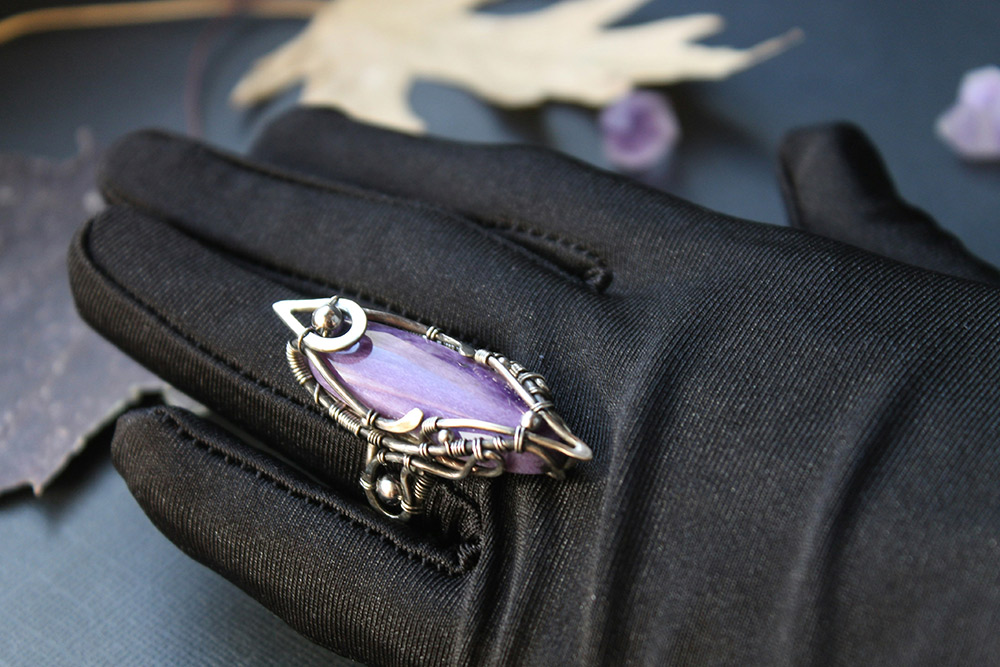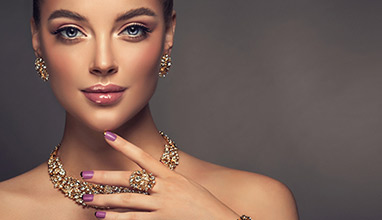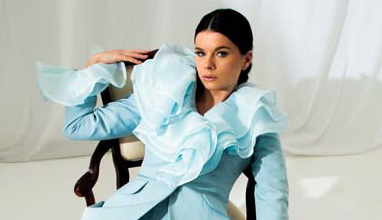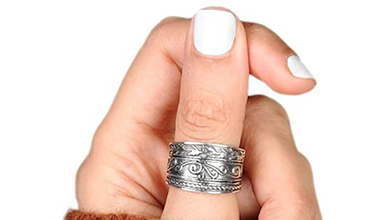Jewelry as Art: Bridging Tradition with Contemporary Design
Jewelry has always been more than just decorative objects; it is a reflection of human culture, creativity, and history. From the earliest days when ancient civilizations adorned themselves with shells and bones, to the intricate gold and gemstone creations of the Egyptians, jewelry has served as a powerful symbol of status, spirituality, and personal expression. As we delve into the historical journey of jewelry as an art form, we uncover a rich tapestry of innovation and cultural significance that continues to inspire modern designers. This exploration not only highlights the artistic evolution but also reveals how deeply intertwined jewelry is with our cultural narratives and personal stories.

Jewelry has been a significant part of human culture for thousands of years, evolving from simple adornments made of shells and bones to intricate pieces crafted from precious metals and stones.
Ancient civilizations like the Egyptians and Romans were pioneers in jewelry making, using materials such as gold and turquoise to create pieces that symbolized status, protection, and cultural identity.
The evolution of jewelry is marked by advancements in materials and techniques, including the discovery of metals like gold and silver, and the refinement of methods such as casting and stone setting.
Cultural influences have played a major role in shaping jewelry design, with Greek mythology inspiring motifs like laurel wreaths, while Indian traditions emphasize the use of gold and precious stones in ceremonial pieces.
In modern times, the line between art and jewelry is blurring, with designers creating unique pieces that serve as both personal expression and artistic value.
Technological innovations such as 3D printing and augmented reality are transforming jewelry design, allowing for intricate customization and enhanced consumer experiences through virtual try-ons.
Sustainability is becoming increasingly important in the jewelry industry, with a shift towards using recycled metals and lab-grown diamonds to reduce environmental impact and ensure ethical practices.
The future of jewelry design promises exciting trends focused on innovation, sustainability, and personalization, reflecting broader societal values while maintaining cultural heritage.
The Historical Journey of Jewelry as an Art Form
The journey of jewelry as an art form is a fascinating tale that stretches back thousands of years. In ancient civilizations, jewelry was crafted from readily available materials such as shells and bones, serving not only as adornments but also as symbols of status and spiritual significance. As societies evolved, so did the techniques and materials used in jewelry making. The Egyptians, for instance, were pioneers in using gold and precious stones like turquoise to create intricate pieces that were believed to offer protection in the afterlife. Similarly, the Romans advanced the craft with their sophisticated metalworking skills, producing exquisite items that reflected both wealth and cultural identity. Throughout history, the evolution of jewelry has been marked by significant advancements in materials and techniques. From the use of simple natural elements to the development of complex metal alloys, each era brought new innovations that enriched this art form. The transition from basic adornments to elaborate creations involved several key developments:
Material Innovation: The discovery and utilization of metals like gold, silver, and bronze allowed for more durable and ornate designs.
Technique Refinement: Techniques such as casting, soldering, and stone setting became more sophisticated over time.
Cultural Significance: Jewelry pieces often carried deep spiritual or societal meanings, reflecting the beliefs and values of their time.
This rich tapestry of history not only highlights the artistic progression but also underscores how jewelry has always been intertwined with human culture and expression.
Cultural Influences on Jewelry Design
Jewelry design has been profoundly influenced by various cultures throughout history, each leaving its unique mark on this timeless art form. From the intricate motifs of Greek mythology to the vibrant and symbolic designs of Indian traditional jewelry, these cultural narratives have enriched the world of jewelry with stories and meanings that transcend mere adornment. Greek jewelry often drew inspiration from mythological figures and tales, incorporating symbols like laurel wreaths and gods into their designs. This not only showcased artistic skill but also conveyed cultural values and beliefs.
In India, jewelry is deeply intertwined with tradition and spirituality, often used in rituals and ceremonies to signify prosperity and protection. The use of materials such as gold, silver, and precious stones in Indian jewelry reflects both aesthetic beauty and spiritual significance. Modern designers continue to draw inspiration from these rich traditions, blending ancient motifs with contemporary styles to create pieces that resonate with today's audience. This fusion of past and present allows for a diverse range of expressions in jewelry design, making it a powerful medium for personal storytelling.
Greek Mythology: Incorporation of mythological symbols like laurel wreaths.
Indian Traditions: Use of gold and precious stones in ceremonial pieces.
Modern Fusion: Blending ancient motifs with contemporary styles.
The influence of different cultures on jewelry design highlights the art form's ability to adapt and evolve while preserving its historical roots. As designers continue to explore these cultural narratives, they create pieces that not only adorn but also educate and inspire, offering wearers a connection to a rich tapestry of human history.
The Intersection of Art and Jewelry in Modern Times
In recent years, the boundaries between art and jewelry have become increasingly fluid, with contemporary artists and designers transforming traditional concepts into innovative expressions of wearable art. This evolution is evident in the works of visionaries like Wallace Chan, whose miniature sculptures redefine what jewelry can be. His creations are not merely accessories but intricate pieces of art that tell a story and evoke emotion. Such collaborations between artists and jewelers have led to a new era where jewelry serves as a canvas for artistic expression.
The trend of merging art with jewelry offers individuals an opportunity to express their unique identities through distinctive pieces. Take, for example, the Orion Amethyst Necklace, which exemplifies this fusion by combining exquisite design with personal storytelling. This piece allows wearers to showcase their individuality while appreciating the craftsmanship involved. The benefits of this trend include:
Personal Expression: Jewelry becomes a medium for showcasing one's personality and style.
Artistic Value: Pieces are crafted with the same attention to detail as traditional artworks.
Unique Designs: Each piece is distinct, offering something special beyond mass-produced items.
This intersection of art and jewelry not only enriches personal wardrobes but also elevates the perception of jewelry from mere adornment to meaningful art forms. As more designers embrace this approach, we can expect to see even more groundbreaking creations that challenge conventional norms and celebrate individual expression.
Technological Innovations in Jewelry Making
In the ever-evolving world of jewelry design, technology plays a transformative role, reshaping how artisans and designers bring their visions to life. One of the most groundbreaking advancements is 3D printing, which allows for the creation of complex and detailed designs that were once unimaginable with traditional methods. This technology enables designers to experiment with intricate patterns and structures, pushing the boundaries of creativity. For instance, pieces like the Orion necklace can be crafted with precision, offering a level of detail that captivates and inspires.
Another exciting development is the use of augmented reality (AR) in the jewelry industry. AR applications provide consumers with an interactive experience, allowing them to virtually "try on" jewelry pieces before making a purchase. This not only enhances the shopping experience but also helps customers make informed decisions by visualizing how a piece will look when worn. Imagine being able to see how a stunning necklace complements your outfit without leaving your home! These technological innovations are revolutionizing the way we perceive and interact with jewelry, making it more accessible and personalized than ever before.
3D Printing: Enables intricate designs and customization.
Augmented Reality: Offers virtual try-ons for enhanced consumer experience.
The integration of these technologies into jewelry design not only elevates artistic expression but also aligns with modern consumer demands for personalization and convenience. As we continue to embrace these innovations, the future of jewelry promises to be as dazzling as it is technologically advanced.
Sustainability and Ethical Practices in Jewelry Design
As the jewelry industry evolves, there's a noticeable shift towards sustainability and ethical practices. Consumers are increasingly aware of the environmental and social impact of their purchases, prompting a demand for responsibly sourced materials. This has led to a rise in brands committed to using recycled metals and lab-grown diamonds, which offer an eco-friendly alternative to traditional mining. These practices not only reduce the carbon footprint but also ensure fair labor conditions. For instance, companies like Pandora have pledged to use only recycled gold and silver by 2025, significantly reducing their environmental impact.
This movement towards sustainability is reshaping consumer choices. Shoppers are now more inclined to support brands that prioritize ethical sourcing and transparency in their supply chains. This shift is evident in the growing popularity of lab-grown diamonds, which are virtually indistinguishable from mined ones but come without the associated ethical concerns. As a result, responsible practices are becoming a standard expectation rather than an exception in the industry. By choosing sustainable jewelry, consumers can enjoy beautiful pieces while contributing to positive change. Here are some key benefits:
Environmental Conservation: Reduced mining activities help preserve natural landscapes.
Social Responsibility: Ensures fair wages and safe working conditions for workers.
Transparency: Provides customers with information about the origin of materials.
The trend towards sustainability is not just a passing phase; it's a fundamental transformation that reflects broader societal values. As more brands adopt these practices, they set new standards for what it means to be responsible in the world of jewelry design.
Future Trends in Jewelry Design
As we look to the horizon of jewelry design, several exciting trends are emerging that promise to redefine this art form. One of the most significant shifts is towards innovation, where new technologies like 3D printing and augmented reality are playing pivotal roles. These advancements allow designers to create intricate, customized pieces that were once unimaginable. Imagine being able to visualize a piece like the Orion necklace in augmented reality before making a purchase—this is becoming a reality for many consumers. Such technologies not only enhance the design process but also offer a more interactive and personalized shopping experience.
Another trend gaining momentum is the focus on sustainability and ethical practices. As consumers become more environmentally conscious, there's a growing demand for jewelry made from recycled metals and lab-grown diamonds. Brands committed to these practices are leading the way in promoting responsible consumption. This shift is influencing consumer choices significantly, as more people seek out pieces that reflect their values. Looking ahead, we can expect to see an increase in the use of alternative materials and innovative techniques that prioritize both sustainability and personalization, ensuring that jewelry remains a true reflection of individual style and cultural heritage.
Summary
The historical journey of jewelry as an art form is a captivating narrative that spans millennia. From the early days when ancient civilizations crafted adornments from shells and bones, jewelry has always been more than just decoration; it has served as a symbol of status and spiritual significance. As societies progressed, so did the craftsmanship and materials used in jewelry making. The Egyptians, for example, were trailblazers in utilizing gold and precious stones like turquoise to create intricate pieces believed to offer protection in the afterlife. Similarly, the Romans advanced the craft with their sophisticated metalworking skills, producing exquisite items that reflected both wealth and cultural identity.
Throughout history, jewelry has evolved significantly in terms of materials and techniques. Each era brought new innovations that enriched this art form, transitioning from simple natural elements to complex metal alloys. Key developments included material innovation with metals like gold and silver, technique refinement such as casting and stone setting, and cultural significance where pieces often carried deep spiritual or societal meanings. This rich tapestry of history not only highlights artistic progression but also underscores how jewelry has always been intertwined with human culture and expression.
FAQ
How has the role of jewelry evolved over time?
Jewelry has transformed from simple adornments made of natural materials like shells and bones to intricate pieces crafted from precious metals and stones. Initially, it served as a symbol of status and spiritual significance. Over time, with advancements in techniques and materials, jewelry became more ornate and complex, reflecting cultural identities and artistic expression.
What are some lesser-known cultures that have influenced jewelry design?
While the article highlights Greek and Indian influences, other cultures like the Celts and the indigenous peoples of the Americas have also left their mark on jewelry design. Celtic designs often feature intricate knotwork and symbolism, while Native American jewelry is known for its use of turquoise and silver, often incorporating motifs that reflect nature and spirituality.
How do modern designers incorporate traditional elements into contemporary jewelry?
Modern designers often blend traditional motifs with contemporary styles by using advanced techniques like 3D printing to recreate classic patterns with a modern twist. They may also use traditional materials in new ways or combine them with unconventional elements to create unique pieces that honor the past while appealing to today's aesthetic sensibilities.
What are some challenges faced by the jewelry industry in adopting sustainable practices?
The transition to sustainable practices involves challenges such as sourcing ethically produced materials, ensuring transparency in supply chains, and balancing cost with environmental responsibility. Additionally, educating consumers about the benefits of sustainable jewelry can be a hurdle, as it requires changing long-standing perceptions about luxury and value.
Can technology completely replace traditional craftsmanship in jewelry making?
While technology offers exciting possibilities for innovation in design and production, it is unlikely to completely replace traditional craftsmanship. The artistry and skill involved in handcrafting jewelry add a level of uniqueness and personal touch that many consumers still value. Instead, technology complements traditional methods by enhancing precision and allowing for more complex designs.
How does augmented reality enhance the consumer experience in jewelry shopping?
Augmented reality (AR) allows consumers to virtually try on pieces before purchasing, providing a more interactive shopping experience. This technology helps customers visualize how a piece will look when worn, aiding them in making informed decisions without needing to visit a physical store. It also adds an element of fun and engagement to the shopping process.
What future trends might we see in personalized jewelry design?
The future of personalized jewelry design could include even greater customization options through advancements like AI-driven design suggestions based on individual preferences or lifestyle data. We might also see increased use of alternative materials that allow for personalization while maintaining sustainability standards.
Hits: 4899 | Leave a comment












